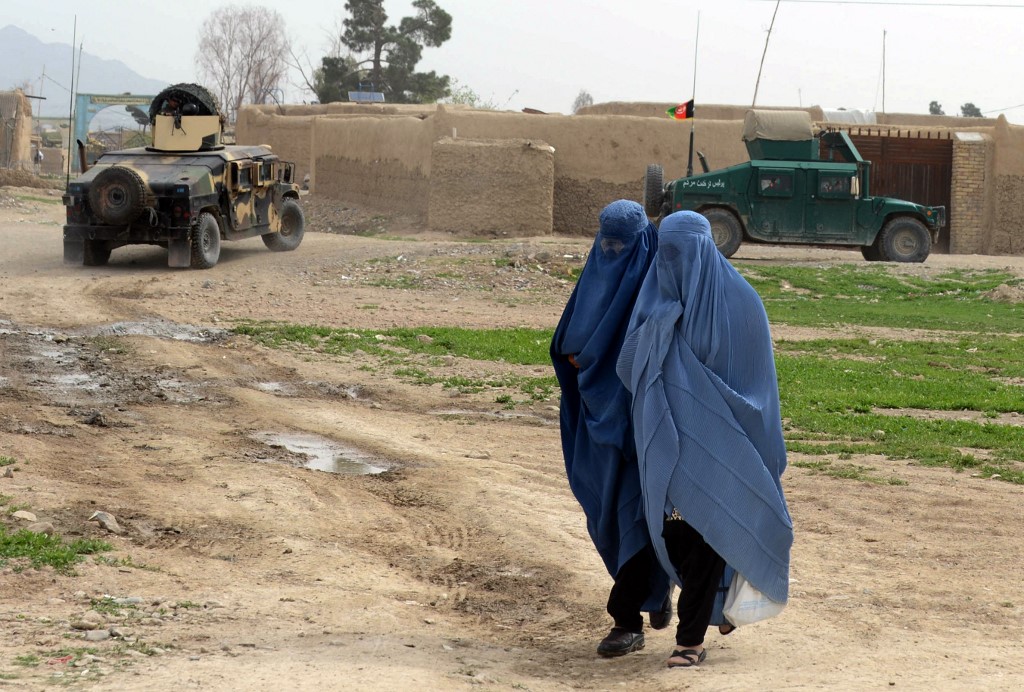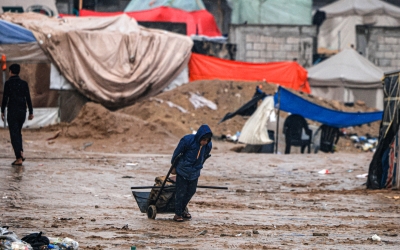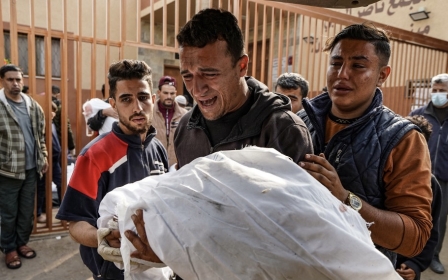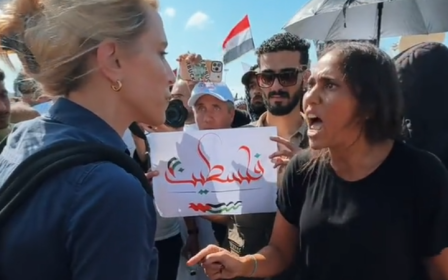Hamas 'mass rape': How Israel weaponises fear of Muslim men to fuel violence in Gaza
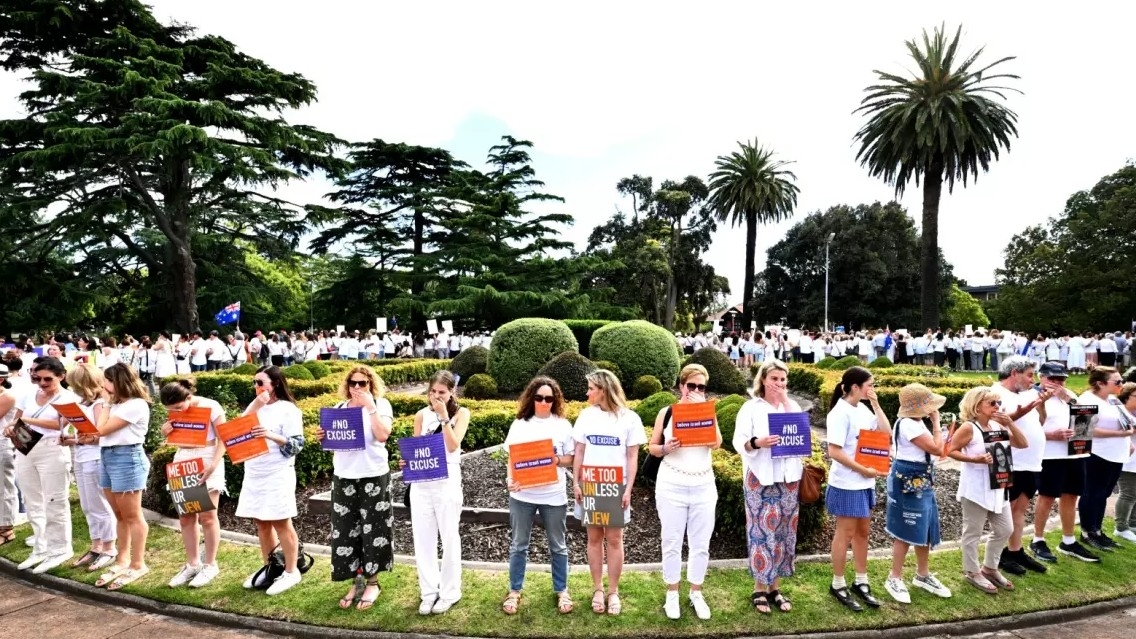
In his opening address to the International Court of Justice on 12 January, the legal adviser to Israel’s Foreign Minister, Tal Becker, stated: “Openly displaying elation, [Hamas militants] tortured children in front of parents, and parents in front of children, burned people, including infants, alive, and systematically raped and mutilated scores of women, men, and children.”
Becker’s phrase “systematically raped” referenced an ongoing claim that the sexual violence allegedly committed by Hamas on 7 October was widespread, “systematic”, and an intended weapon of war.
As war raged on in Gaza, the Israeli state and its supporters within the US have struggled to control the narrative in the face of the largest global mobilisation for Palestinian rights in history.
In late December, The New York Times published its investigation into the 7 October sexual violence claims. The article’s cover photo featured the grieving family of Gal Abdush, a 34-year-old Israeli Jewish woman who was killed along with her husband as they attempted to flee the Nova music festival.
New MEE newsletter: Jerusalem Dispatch
Sign up to get the latest insights and analysis on Israel-Palestine, alongside Turkey Unpacked and other MEE newsletters
Abdush’s story is central to The Times’s inquiry as evidence of a “pattern of rape” and mutilation, among other horrific accusations against Hamas.
Days later, however, on 2 January, the family of Abdush renounced the story, maintaining that the reporter manipulated them and that there was no evidence of rape. As other outlets reported, The Times investigation further repeats several discredited and debunked claims of atrocities committed on 7 October.
This incident has raised several questions about the “widespread” rape allegations and prompted calls for “compelling evidence”, most notably from Palestinians under bombardment in Gaza.
But after more than 100 days of war, Israeli investigators have struggled to connect witness testimonies to alleged rape victims. This has not deterred Israeli officials and their supporters from repeating such shocking claims, including that Hamas “weaponised sexual violence” to justify their ongoing brutal assault on Palestinian civilians.
‘Monstrous violence’
On 2 January, Israeli spokesman Eylon Levy defended Israel against charges of genocide brought by South Africa at the International Court of Justice, insisting: “The Hamas rapist machine bears full moral responsibility for all the casualties in this war that it launched on 7 October and is waging inside and under schools, mosques, homes and UN facilities.”
These unconfirmed stories were readily metabolised into an acceptance of catastrophic violence against Palestinians
Since declaring war on Gaza, Israel has activated its propaganda machine to dehumanise Palestinians and depict them as barbaric.
From unimaginable acts like the swiftly-debunked “40 beheaded babies” claim to the continued insistence that rape was “widespread” on 7 October, such fantastical stories have been needed to legitimise Israel’s genocidal campaign against a population Israeli Defence Minister Yoav Gallant called “inhuman animals”.
Tropes linking Muslim men to monstrous forms of violence, including sexual violence, speak to longstanding fears about them within Europe and the US. There is a long history of the use of these fears to further violence against Muslims.
This history explains why so early on - and without any evidence - many immediately believed claims that Hamas had committed beheadings and mass rape. These unconfirmed stories were readily metabolised into an acceptance of catastrophic violence, including the killing of more than 24,000 Palestinians.
Follow Middle East Eye’s live coverage of the Israel-Palestine war
Discussions about sexual violence first took centre stage in public discourse in early December.
During the temporary ceasefire, which coincided with the American Thanksgiving holiday one week earlier, international media covered how some recently released Israeli hostages reported they were treated with kindness, including children being offered candy, by Hamas fighters while in captivity. These reports threatened the Israeli government’s claim that their outsized response to 7 October in Gaza was necessary to eliminate Hamas, a particularly barbaric enemy.
In the first week of December, editorials emerged in multiple news outlets contending that the alleged widespread sexual violence Hamas perpetrated on 7 October was not getting sufficient attention or condemnation, including in The Guardian and Haaretz. At the same time, Israeli politicians began explicitly invoking rape as they called for more international support for Israel.
On 5 December, for example, Israeli Prime Minister Benjamin Netanyahu explained that the “rape of Israeli women” was evidence of the depravity of Hamas, which required “overwhelming force” in Gaza” to extinguish. Given this depravity, he asked all “civilised nations” to “stand with Israel”. The same day, Israeli President Isaac Herzog appeared on MSNBC to frame the war against Hamas as one being fought “to save the values of Western civilisation.”
As a historian of Islam, gender, and empire in the Middle East and like other feminist scholars, I immediately recognised how Netanyahu’s speech and Herzog’s claim evoked the longstanding rhetoric of the battle of civilisations between the barbaric “East” and the civilised “West”.
Within this framework, the treatment of women is a metric for a group’s “civilised” status. What is implicit in such speech is that Israel, a free, civilised, feminist society respected by other “civilised leaders”, was attacked by Hamas, a group of Muslims whose barbarism and violent misogyny were reflected in their intentional use of mass rape as a weapon of war.
The UN High Commissioner for Human Rights has sounded the alarm about the continued dehumanisation of Palestinians in Israel and American public discourse. Claims that position Hamas and Palestinians against “the values of Western civilisation” contribute to this dehumanisation. While many in the West are rightly careful not to employ antisemitic tropes, those about Muslim misogyny remain uncritically in circulation.
Stereotyping Muslim men
Globally, sexual violence has been part of almost every violent conflict of the 20th century. During and immediately after the Second World War, both Allied and Axis armies terrorised local civilian populations through rape, among other forms of violence.
A new study has shown that more than 100,000 women may have been raped during the recent two-year civil war in Ethiopia’s northern Tigray region. Multiple reports suggest the Russian army has engaged in sexual violence in Ukraine.
European and American claims have linked sexual violence to Muslim men in particular in order to legitimise multiple forms of violence and exclusion
Given this disturbing ubiquity of sexual violence across conflicts and the existing testimonies, whatever forms of sexual violence that took place on 7 October must be thoroughly investigated.
While the UN’s Commission of Inquiry announced in November that it would investigate gender-based violence that occurred on 7 October, Israel’s health ministry has asked doctors not to cooperate with UN investigators, whose inquiry they’ve described as “antisemitic”.
At various moments throughout history, European and American claims have linked sexual violence to Muslim men in particular in order to legitimise multiple forms of violence and exclusion.
In the mid-19th century, as the French state consolidated its hold over Algeria, politicians cited aberrant Muslim sexual norms (polygamy, divorce, harems) to explain their confiscation of land and denial of citizenship rights to Algerians.
In the decades immediately after Algerian independence in 1962, claims about Muslim men’s insatiable sexuality and violent nature again re-emerged in France. French trauma over the loss of colonial Algeria was expressed through hysteria within public discourse, which associated Muslim immigrants with rape and sexual violence, although official statistics contradicted this.
Such claims were used to protest North African immigration to France and materialised into present violence against North African communities, including by groups such as the Committee to Keep France for the French. Indeed, across Europe, anti-Muslim hysteria has proliferated claims about Muslims and sexual violence, and has been invoked by Far Right political parties to call for limiting Muslim immigration.
These claims have been equally present in America’s political discourse. Although the war in Afghanistan was waged against the Taliban in retaliation for their collaboration with Al Qaeda, its framing to the broader public often focused on the oppression and violence Afghan women faced.
After the 11 September attacks, then-New York Congresswoman Carolyn Maloney appeared on the House floor in a burqa to urge other representatives to support the war so that women could be “liberated” from the violence imposed on them by the Taliban.
The State Department released a report called “The Taliban’s War on Women”, which asserted that sexual violence and rape were regular parts of the Taliban’s treatment of women. And that November, in a national radio address, First Lady Laura Bush asserted that the War on Terror was “a fight for the rights and dignity of women”. The violence Afghan women faced was real, and yet the focus on this violence was used to justify a destructive war in Afghanistan and its complicated reality.
‘Ubiquity’ of sexual violence
Much of the public discourse around sexual violence in recent weeks, whether intentionally or not, draws on this longer history of stereotyping Muslim men as distinctly sexually violent and oppressive. Stuart Seldowitz, a former Obama administration adviser, repeatedly verbally harassed a Muslim food vendor in New York City in a series of videos posted on 21 November, and in one video asked, “Did you rape your daughter like Muhammad did?”
An Israeli-Irish father, Thomas Hand, said of his daughter, who was taken hostage by Hamas, “She was either dead or in Gaza, and if you know anything about what they do to people in Gaza, that is worse than death,” with the implication that she might have suffered sexual violence. She was later released, unharmed, in a hostage exchange.
In a 4 December press briefing, State Department spokesperson Mathew Miller suggested that Hamas was not releasing additional female hostages because they might attest to having suffered sexual violence. When pressed by AP reporter Matt Lee to explain whether he had seen any evidence of this, Miller explained this was only his own theory. The official X account for Israel then reposted Miller’s claim without the exchange, implying this was an official State Department stance.
Acknowledgement and understanding of this long history of claims about Muslim men as uniquely prone to monstrous sexual violence allows us to talk seriously about sexual violence without letting those discussions become weaponised to enact further violence.
A frank discussion about sexual violence will enable us to take seriously how sexual violence is perpetrated by Israel as well.
On 3 January, Human Rights Watch reported that Gazan workers detained in Israeli prisons were subjected to sexual violence, including being stripped naked and beaten and being photographed. The sexual torture Palestinian men and women have faced in Israeli prisons is well documented.
On 4 December, in a CNN interview, former State Department official Josh Paul discussed the rape of a 13-year-old Palestinian boy in Israeli prisons. The ubiquity of rape is not limited to wartime contexts or Israel either. According to the Rape, Abuse & Incest National Network, around 500,000 people are victims of rape or sexual assault every year in the US.
The ubiquity of rape and sexual violence should never result in our acceptance. Yet this global and historical context is vital to understanding these problems are not specific to one part of the world or one population. Anxiety around sexual violence should not be outsourced to particular groups while ignoring the global reality of its ubiquity.
An awareness of the long history of these political uses of sexual violence is necessary so that feminists and society broadly can re-centre survivors of sexual violence and the cultures that enable them in these discussions.
The views expressed in this article belong to the author and do not necessarily reflect the editorial policy of Middle East Eye.
This article is available in French on Middle East Eye French edition.
Middle East Eye delivers independent and unrivalled coverage and analysis of the Middle East, North Africa and beyond. To learn more about republishing this content and the associated fees, please fill out this form. More about MEE can be found here.



